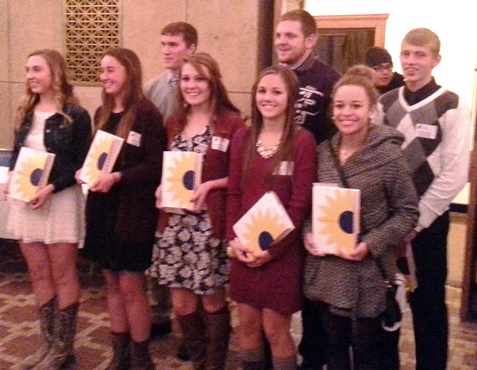With a projected shortfall in the Kansas budget of $278 million, Kansas Lottery officials will be looking over the budget to find areas that could be cut.
Although they have already passed their budget for this year, lottery officials will start a review of the budget to see if there are any areas where money could be saved, Lottery executive director Terry Presta told the Kansas Lottery Commission at its meeting Wednesday. He mentioned, for example, reducing the number of trips taken by agency staff.
Some lottery commissioners expressed a concern that cuts not affect the profit-making ability of the Kansas Lottery, which oversees state lottery games plus three state-owned and privately managed casinos.
Casino revenues were up about $1.1 million from September to October, lottery officials reported Wednesday. Hollywood Casino in Kansas City, Kan., reported $11,362,958 in revenues during October.
Revenues at Hollywood Casino in Kansas City, Kan., increased $607,839 from the previous month’s total; at the Kansas Star Casino in Mulvane, Kan., revenues were up $451,449 in the past month; and at the Boot Hill Casino in Dodge City, revenues climbed $32,178 since last month.
At the Hollywood Casino, the October 2014 revenues were an increase of 1.3 percent over October of last year, according to a report from the general manager of the casino to the Kansas Racing and Gaming Commission. Slots revenue increased 7.4 percent last month, according to the report. Last month, there was a 27 percent decrease in table games revenue, attributed to a lower than usual hold percentage, according to the report.
A big money-making agency for the Kansas government, the Kansas Lottery had $245.7 million in sales during fiscal year 2014 and transferred $74.3 million to the state, according to a statement on the agency’s website. The lottery paid out 56.6 percent in prizes.
In fiscal year 2014, $42.4 million went to the state’s economic development initiatives fund, $2.5 million went to the juvenile detention facilities fund, and nearly $5 million went to the correctional institutions fund. About $24.3 million went to the state’s general fund.
The Kansas Lottery has some prospects for additional revenue next year. It is trying to add another state-owned casino in southeast Kansas to the three already operating, including one in Kansas City, Kan. There is a deadline of Dec. 19 for interested companies to submit an application for a casino in southeast Kansas, according to lottery officials. However, that deadline might or might not be moved back to allow time for other boards to be put in place for the process, the commission learned on Wednesday.
While Mega Millions tickets sales have been good this year, Powerball sales have been off, according to lottery officials. The Kansas Lottery plans to add a new national lottery game, Monopoly Millionaires’ Club, in January. Missouri and several other states already are offering this game.
The Kansas Holiday Millionaire Raffle tickets boost income at the end of the year for the Kansas Lottery. The final drawing in the contest is Dec. 31.

